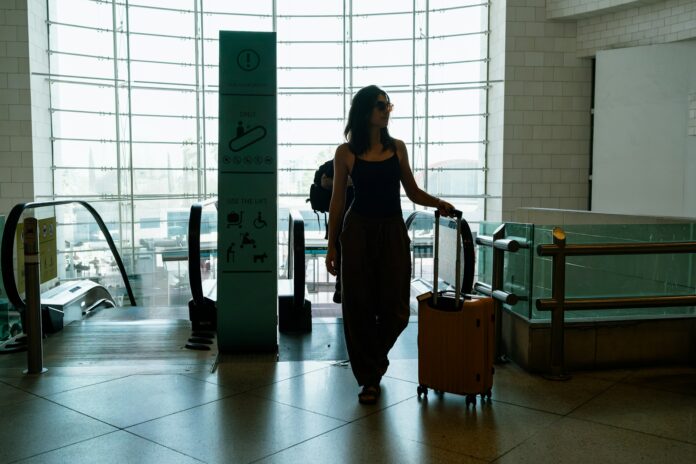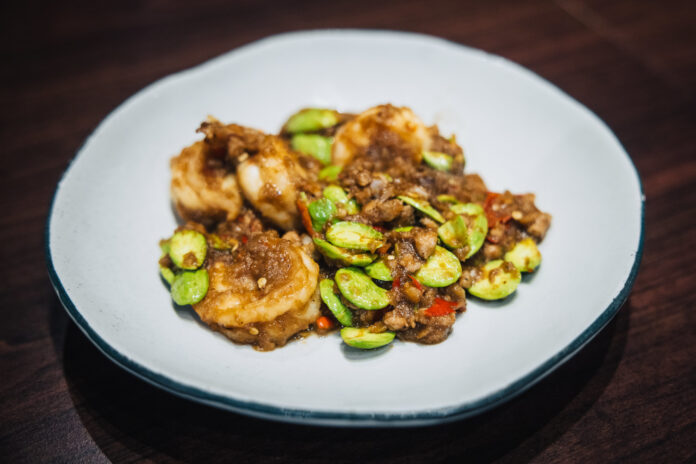The ‘Queen of the Dolomites’ is preparing to reclaim its Olympic glory. Cortina d’Ampezzo will co-host the 2026 Winter Olympics alongside Milan during February, exactly 70 years after it first hosted the Games in 1956.
With women’s alpine skiing, curling, and sliding sports taking place against the backdrop of UNESCO-listed peaks, Cortina offers visitors the chance to witness world-class athletic competition whilst exploring one of Italy’s most glamorous mountain destinations.
When To Visit
The Milano Cortina 2026 Winter Olympics runs from 6th to 22nd of February, and will see Cortina at its busiest and most expensive, but also its most electric. If you’re primarily interested in the atmosphere rather than attending specific events, consider arriving before or immediately after the Games, when accommodation may be more available and prices slightly lower.
The Paralympic Winter Games follow from 6th to 15th of March, hosting Paralympic alpine skiing, wheelchair curling, and Paralympic snowboarding. This period typically sees fewer crowds than the Olympics whilst still maintaining the excitement of world-class competition.
For those seeking a quieter Cortina experience, January or late March offer good skiing conditions with fewer visitors, though you’ll miss the unique energy of the Olympic fortnight.
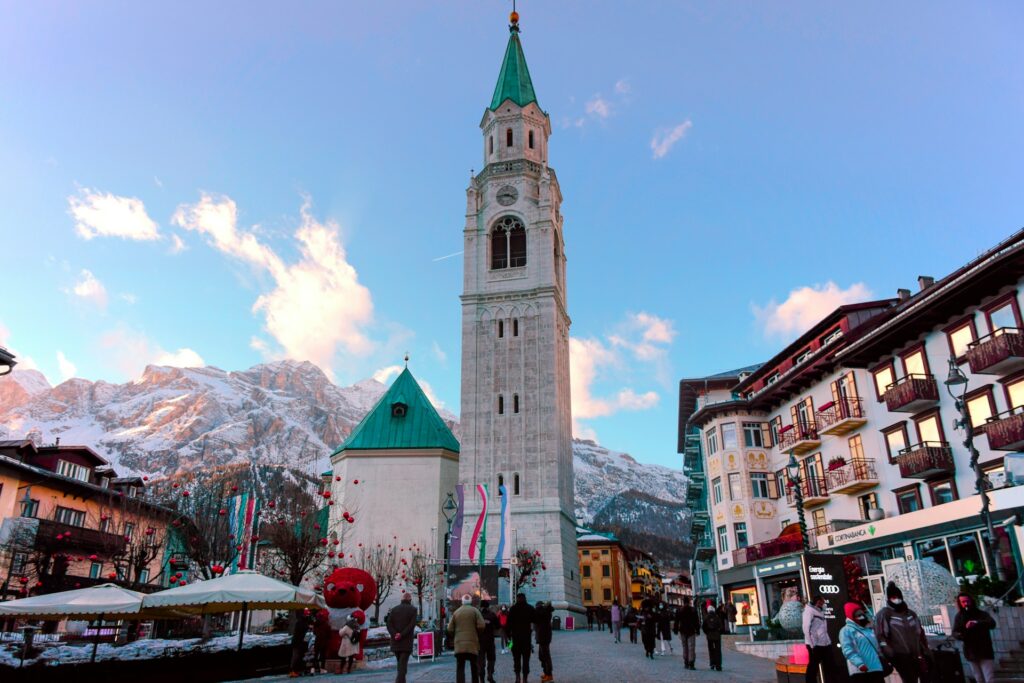

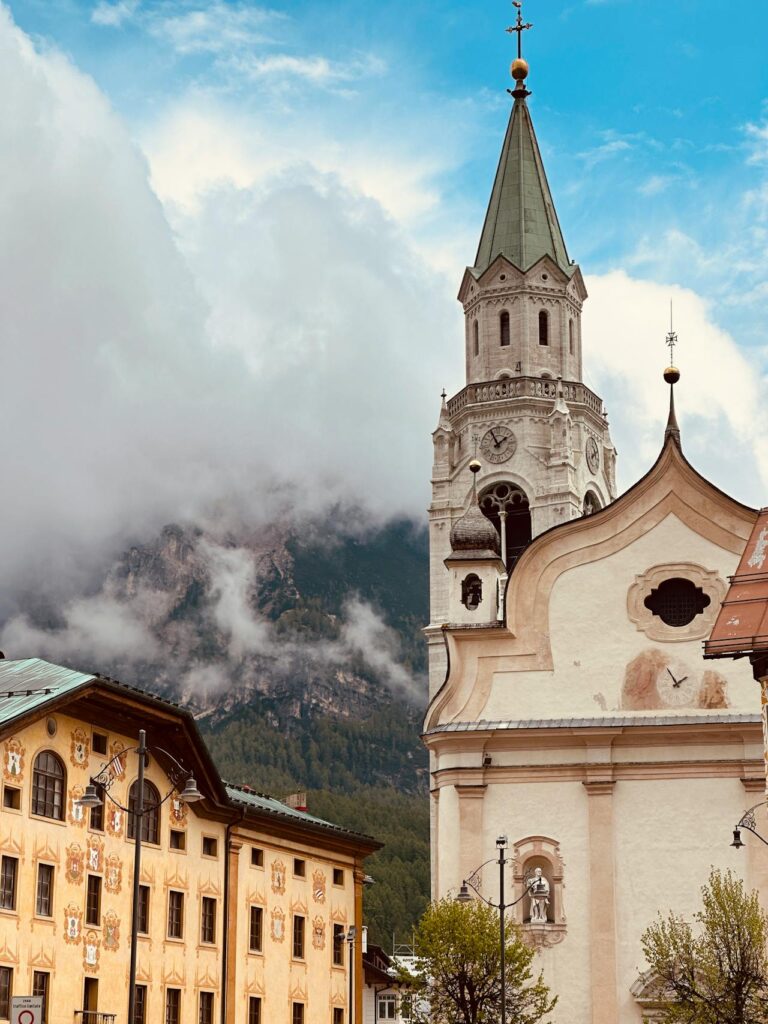
Getting There From The UK
The most practical route to Cortina d’Ampezzo starts with a flight to Venice Marco Polo Airport, which has direct connections from London Heathrow, Gatwick, and London City. From Venice, you’re just two hours from the alpine drama of the Dolomites.
Several options connect the airport to Cortina. The Cortina Express and ATVO buses run direct services, with journey times between two and three hours and fares from around £9 when booked in advance. FlixBus also operates this route, typically departing several times daily. For those preferring a more straightforward journey, transfers to Cortina or Milan provide door-to-door service, particularly convenient if you’re arriving with skiing equipment or travelling during the busy Olympic period.
Alternatively, you could fly into Verona, Treviso, or even Innsbruck in Austria, though Venice remains the most popular gateway with the best connections to Cortina. If you’re planning to explore the wider Dolomites region, hiring a car offers the greatest flexibility, though parking in Cortina’s town centre can be challenging during peak season.

Watching Olympic Events
Cortina will host some of the Games’ most thrilling competitions. The legendary Olympia delle Tofane slope, regularly featured in the FIS Alpine Ski World Cup, will stage women’s alpine skiing events including downhill and super-G races. The Olympic Ice Stadium, originally built for the 1956 Games, will host curling competitions. Meanwhile, the newly constructed Sliding Centre will be the venue for bobsleigh, skeleton, and luge events, reviving Cortina’s long-standing tradition in these sports.
Tickets are exclusively digital and available through the official Milano Cortina 2026 platform. With venues spread across the region, planning your Olympic schedule in advance is essential. Shuttle services will connect major sites to the various competition venues, with park-and-ride schemes operating for those driving.
Read: The Dolomites’ 5 most magnificent mountain retreats
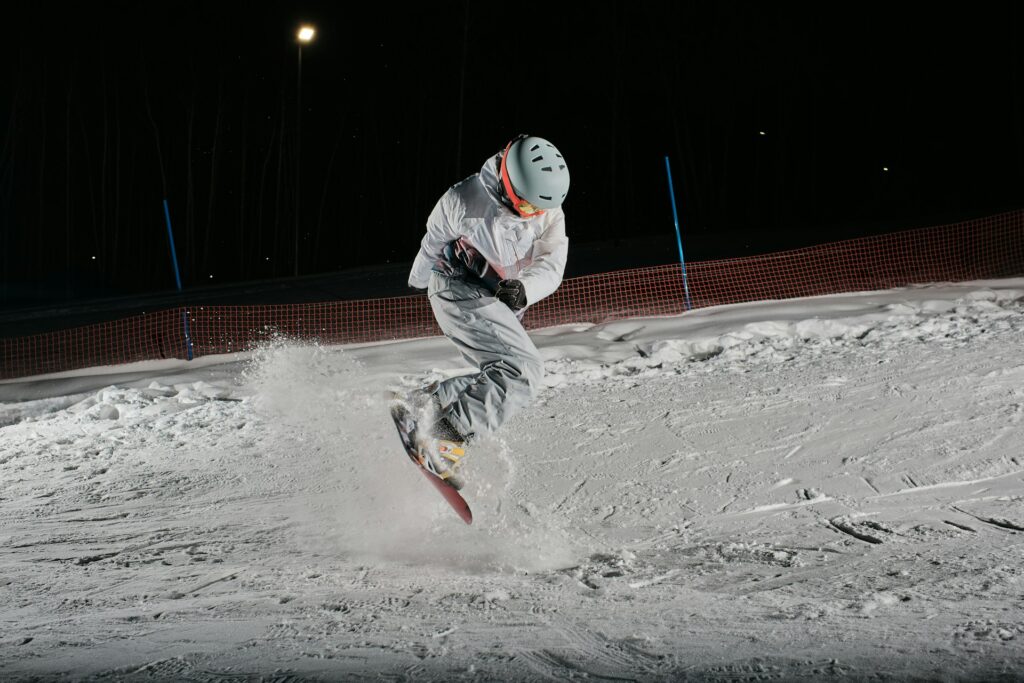
Skiing The Slopes
Even if you’re not attending Olympic events, Cortina’s skiing credentials are impeccable. The resort boasts 120 kilometres of pistes across three main areas: Faloria-Cristallo, Tofana, and Lagazuoi-Cinque Torri. From gentle nursery slopes to hair-raising World Cup runs, there’s terrain for every ability level.
The Tofana area offers the easiest slopes, perfect for beginners and intermediates, with the Socrepes piste being particularly popular for those building confidence. More experienced skiers should head to Faloria, where red and black runs dominate, or venture to the Lagazuoi-Cinque Torri area, where the distinctive rock towers create one of the Dolomites’ most photogenic skiing experiences.
Cortina is part of the Dolomiti Superski network, giving you access to 1,200 kilometres of pistes across the region if you’re keen to explore beyond Cortina itself. Multiple ski schools and rental shops throughout town make getting kitted out straightforward, though booking equipment hire in advance during the Olympic period is advisable.
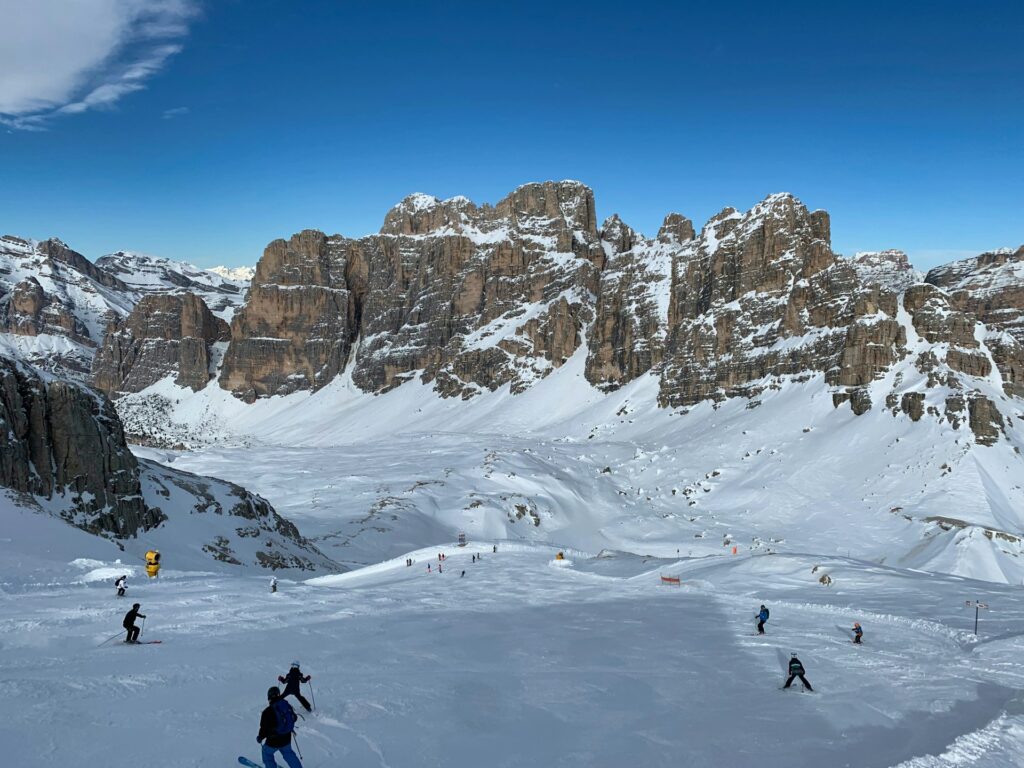

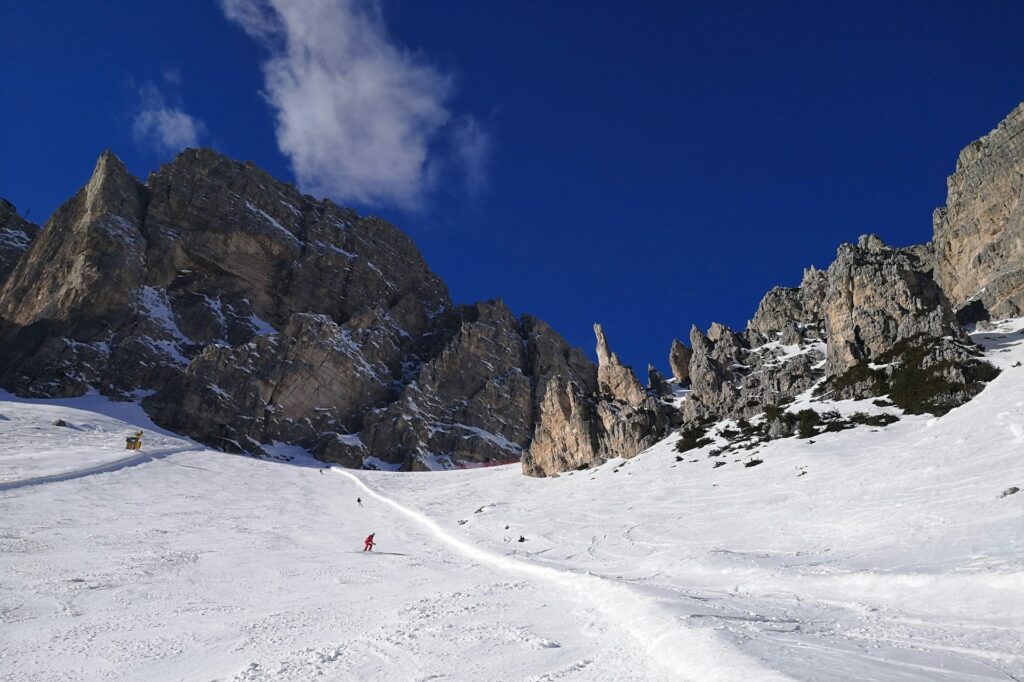
Beyond The Slopes
Winter activities in Cortina extend well beyond skiing. Dog sledding experiences at Peziè de Parù Alpine Farm in nearby Pocol let you drive your own team of huskies through snow-covered forests after a brief training session, offering a 30-minute excursion through otherwise inaccessible mountain scenery.
Snowshoeing provides a quieter way to experience the Dolomites’ winter magic, with numerous trails winding through pristine woodland and offering spectacular mountain views. The legendary Tre Cime di Lavaredo peaks are accessible via snowshoe, though this requires more stamina and proper equipment.
Fat biking and ice climbing have grown in popularity for those seeking different thrills. The Alpine Guides office in the town centre can arrange both activities, ensuring you’re properly equipped and accompanied by professionals who know the terrain.

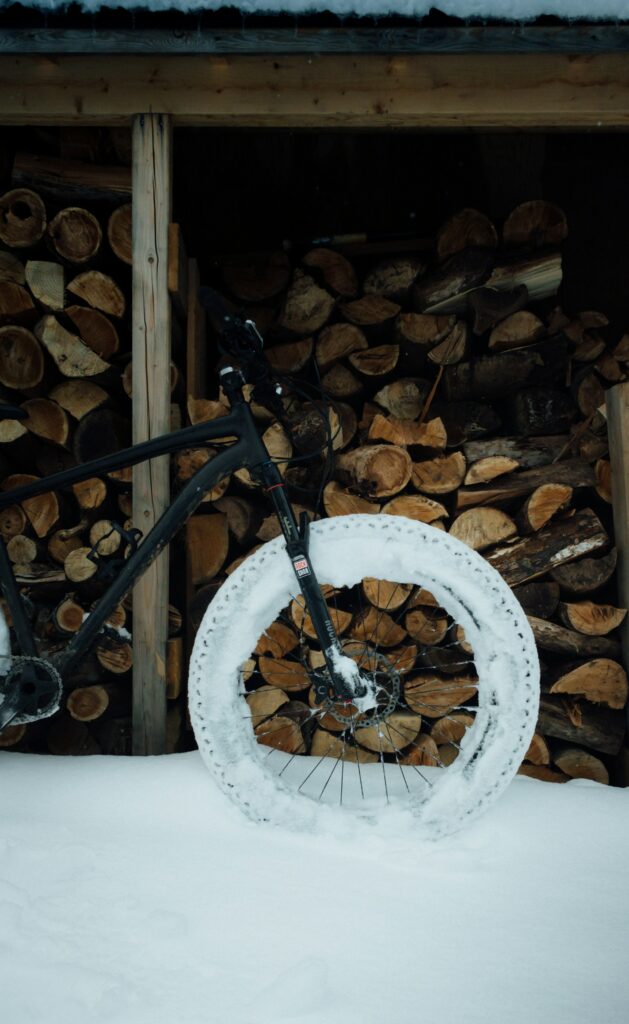
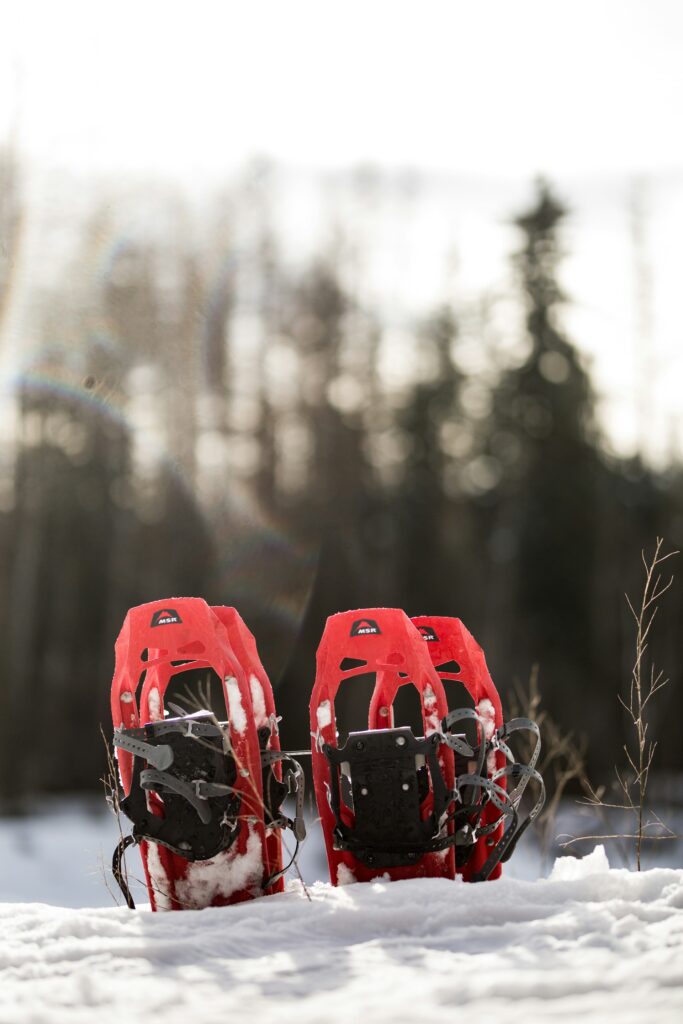
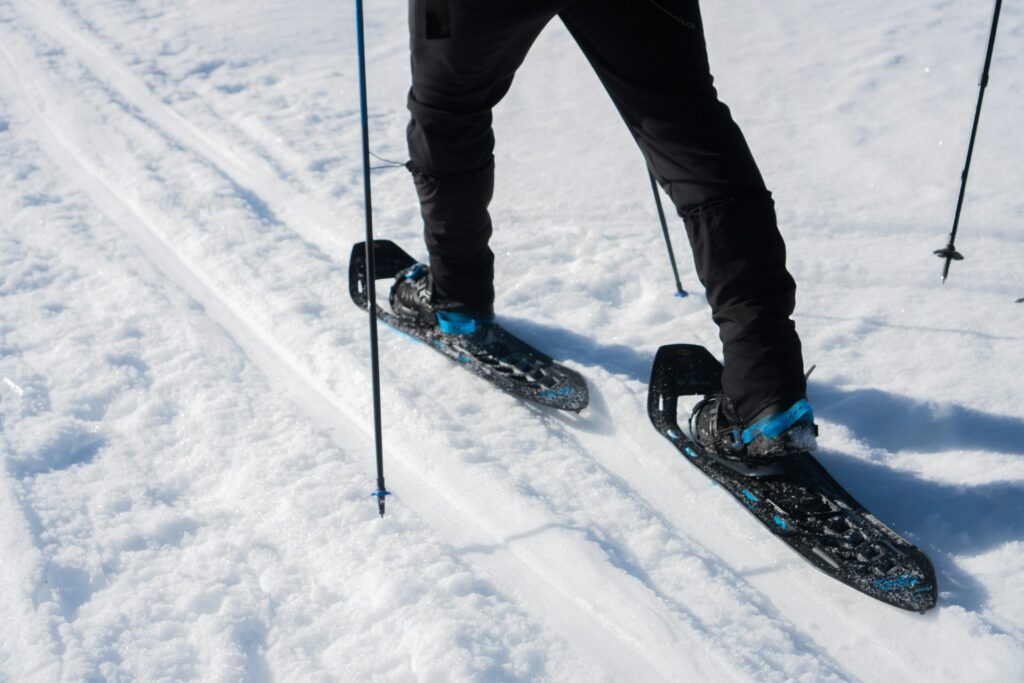
Dining & Après-Ski
Cortina’s dining scene seamlessly blends Austrian and Venetian influences, creating a distinctive Ampezzo cuisine. Local specialties include casunziei (ravioli filled with spinach or beetroot, served with butter and poppy seeds), chenedi (Tyrolean-style dumplings), and gulasch süppe (Hungarian-inspired meat soup). Potatoes all’ampezzana – slices of boiled potato sautéed with onion and speck – appear as a side dish on most menus.
For upscale dining, several restaurants have earned recognition for their creative approaches to regional cuisine. Tivoli, located in a traditional Alpine house outside the centre on the road to Falzarego Pass, skilfully combines local traditions with modern techniques and offers panoramic terrace views. The restaurant holds a Michelin star and is run by chef Graziano Prest. In the town centre, Ra Stua at Hotel Ciasa Lorenzi serves exceptional beef in a warmly elegant atmosphere.
More casual options include Al Passetto, popular with both locals and visitors for well-priced pizzas and traditional dishes. Hacker Pschorr Haus offers Tyrolean specialties and good-value meals in a central location. For pizza by the slice, Ampezzo Pizza in Piazzale delle Poste provides quick sustenance between activities.
The après-ski scene ranges from sophisticated cocktails at the Crystal lounge bar in the Cristallo Resort to the livelier atmosphere at Chalet Tofane in Socrepes, where a professional DJ set and Champagne accompany views of the slopes. The tradition here, as throughout the Alps, is to arrive still wearing your ski boots – though sloppy behaviour remains firmly discouraged.
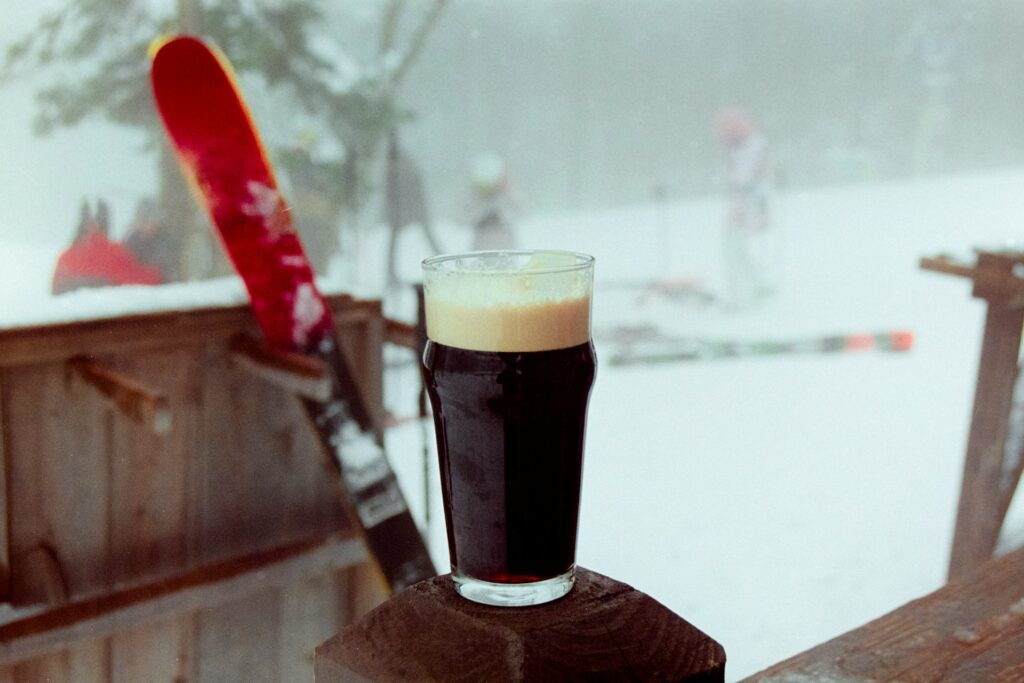
Shopping & Strolling
Corso Italia, Cortina’s pedestrian main street, has been the town’s beating heart since its emergence as an international resort. Designer boutiques from Prada, Moncler, and Armani share space with artisan shops, interior design showrooms, and jewellery stores. Window shopping here doubles as people-watching, particularly during the peak weeks around Christmas and New Year when Cortina’s glamorous reputation is on full display.
Even if you’re not planning any major purchases, the street’s Alpine architecture and mountain backdrop make for pleasant wandering between meals or after a day on the slopes. Small cafés and bars provide spots to rest with an espresso or aperitivo whilst watching the parade of well-heeled visitors and locals.
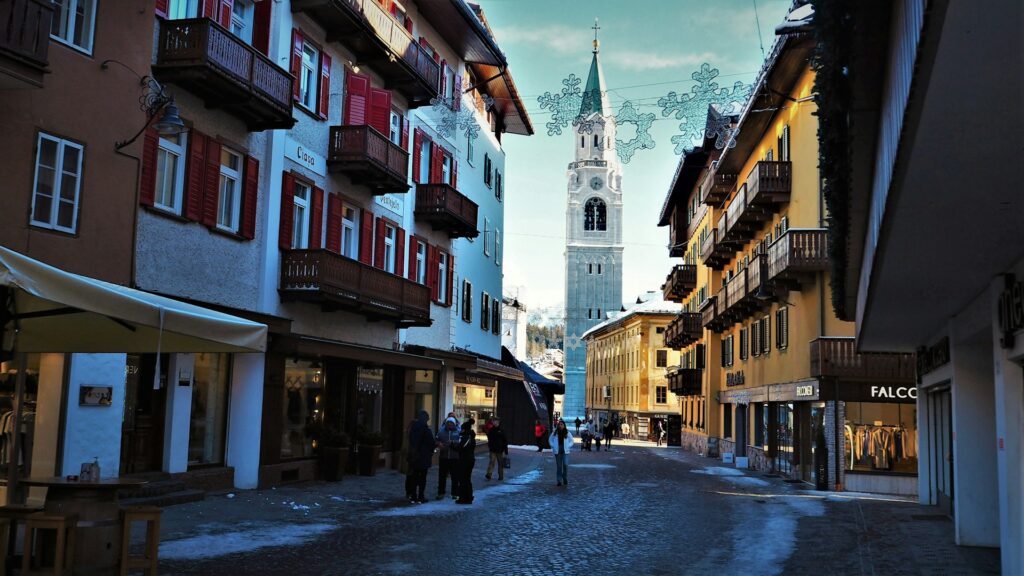
Where To Stay
Accommodation in Cortina spans from grand five-star hotels to cosy family-run guesthouses, though options don’t come cheap given the resort’s exclusivity. The Grand Hotel Savoia Cortina d’Ampezzo, a Radisson Collection property fresh from a huge renovation in 2021, represents the pinnacle of luxury with its spa facilities and elegant rooms overlooking the Dolomites. Hotel de Len offers four-star comfort in the town centre with convenient access to the Faloria cable car.
For better value, consider staying slightly outside the centre. Camina Suite & Spa, north of town, provides four-star amenities with its own ski shuttle service. Three-star options like Ciasa Vervei in Pocol or Baita Fraina offer more affordable rates whilst maintaining good standards. Those on tighter budgets might look at San Vito di Cadore, 11 kilometres south, where hotels like the Fiori Dolomites Experience Hotel provide quality accommodation at lower prices.
During the Olympic period, booking well in advance is essential. Many properties require minimum stays of three to five nights, and those with private parking should be prioritised if you’re driving, as town centre parking is extremely limited.
Know Before You Go
Cortina sits at 1,226 metres altitude, surrounded by peaks that create a spectacular natural amphitheatre. February temperatures typically hover between -5°C and 5°C, though sunshine is common given the town’s position in a wide valley. Pack accordingly: layered clothing, proper winter boots, and sun protection are all essential.
The town itself is compact and walkable, though free shuttle buses connect the centre to various ski lifts and outlying areas. During the Olympics, additional transport services will operate to accommodate the influx of visitors, though expect busy periods and plan extra time for travel between venues.
Language won’t pose major barriers – English is widely spoken in hotels, restaurants, and ski facilities, reflecting Cortina’s long history as an international destination. That said, learning a few Italian phrases never hurts and is always appreciated.
The Olympic Legacy
This isn’t Cortina’s first Olympic rodeo. The 1956 Winter Games marked a turning point for the town, establishing its reputation as a premier ski destination and demonstrating that major sporting events could be successfully hosted in the Alps. Those Games were the first Winter Olympics broadcast on television, bringing Cortina’s dramatic mountain scenery into living rooms worldwide.
Now, 70 years later, the town aims to enhance its infrastructure whilst preserving the authentic Alpine character that makes it special. The challenge of hosting the 2026 Games has prompted significant renovation work throughout town, from updated ski facilities to improved road connections. Some visitors in 2024 and 2025 have reported construction disruption, so it’s worth checking current conditions before finalising travel plans.
The hope is that these investments will benefit both residents and visitors long after the Olympic cauldron is extinguished, cementing Cortina’s position as not just a witness to history, but an active participant in shaping it.
Cortina is also part of our guide to Italy’s most spectacular cycling routes, so why not check that one out next?

